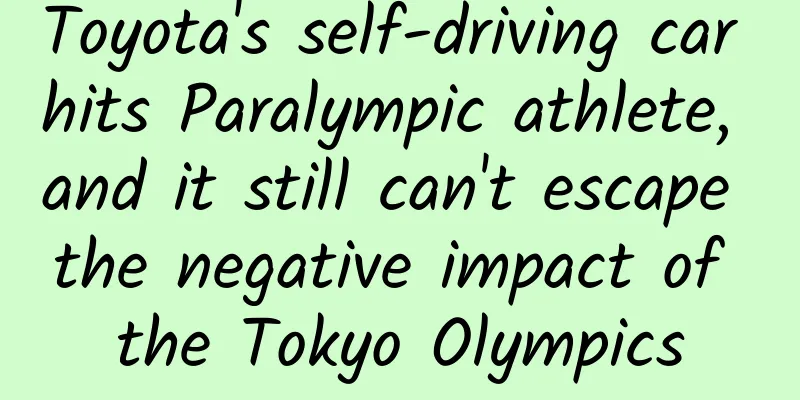Tesla insists on equipping its models with fully autonomous driving hardware

|
On October 19, local time in the United States, Tesla announced that all Tesla cars currently in production, including the Model 3, which has not yet been launched, will be equipped with hardware that can achieve full self-driving capability. These include 8 cameras around the car body, 12 latest ultrasonic sensors, 1 enhanced forward millimeter-wave radar, and NVIDIA's Drive PX 2, an on-board computing device with a processing power 40 times higher than the previous generation. Its functions and installation locations are shown in Table 1 and Figure 1. Tesla wants to achieve the following company vision: Provide everyone with higher driving safety than human driving; Provide lower transportation costs for car owners; Providing low-cost, on-demand mobility services to people without cars. Table 1 Tesla hardware and its functions Figure 1 Tesla hardware installation locations Tesla founder Elon Musk believes that "traffic accidents cause 1.2 million deaths worldwide each year, including more than 30,000 Americans. The foundation for fully autonomous driving is already in place, and its safety is at least twice that of human drivers, so why not speed up the process?" In theory, this makes sense, because the sensors installed on the car can tirelessly capture a large amount of information around the car in real time that humans cannot perceive, and the on-board computing equipment processes it in time and responds at a speed that humans cannot reach. But in fact, due to the unfortunate death of a Tesla owner in Florida, USA, in a car accident while using Autopilot in May this year, ordinary people do not have much trust in the Tesla Autopilot system. As always, once the news of Tesla's fully autonomous driving was released, it caused heated discussions around the world. In the eyes of Tesla's fans, Elon Musk is a shrewd and visionary entrepreneur, while in the eyes of critics and competitors (mainly traditional car companies), some of Musk's decisions are too risky and even reckless: Elon Musk set himself a deadline of 2017 to develop a driverless car that can drive from Los Angeles to New York, while Ford , GM and Google are all set by 2021, and Baidu is set by 2019, which shows Musk's ambition and radicalism. Now that the news has been out for more than 10 days, the noise has mostly passed. If we carefully analyze the official documents released by Tesla and the reports of authoritative media, we will find that every decision made by Elon Musk is supported by scientific basis and rational thinking, and it just happens to reflect the typical thinking mode of Silicon Valley IT companies and the sentiment of Silicon Valley entrepreneurs to change the world. Why is LiDAR not used in Tesla's hardware configuration? There is a clear principle of doing things in Silicon Valley, that is, to maximize the use of cheap resources and save precious resources as much as possible. This practice was originally inspired by Huffman coding (i.e.) derived from Shannon's first law, and is called "Gilder's Law" in economics. For example, due to the effect of Moore's Law, the number of transistors integrated on an integrated circuit chip doubles every 18 months (as shown in Figure 2). Conversely, the cost of a microprocessor with the same performance is reduced by half every 18 months, which is a cheaper resource. Therefore, IT giants like Google and Facebook will inevitably hand over more and more work that was originally done by engineers, a more expensive resource, to computers to reduce the overall office cost. Figure 2 Changes in the number of transistors in microprocessors and Moore's Law Specifically, the Tesla fully autonomous driving system uses the "camera + 40 times computing power" solution instead of using LiDAR (Light Detection And Ranging) like Google and Uber, which can also be explained by "Gilder's Law". As shown in Figure 3, under the influence of Moore's Law, the cost of computing power decreases with a steeper curve over time, while the cost of mechanical rotating LiDAR and mechanical manufacturing parts is not sensitive to time and can only be reduced due to the scale effect generated by large-scale production. Figure 3: Cost changes of driverless car components over time (Source: UISEE Technology) Since Tesla's cars have been mass-produced, cost control is crucial to increasing sales. In contrast, Google and Uber's driverless cars are still in the testing phase, and even if hundreds of them are equipped with $80,000 laser radars, it won't cost much. Therefore, Tesla's choice of "low-cost perception + high-performance computing" is very reasonable for Tesla to control the cost of the entire vehicle in the short term. Although Elon Musk has said on many occasions: "I'm not a big fan of LiDAR, and I don't think it makes sense in this context.", considering that Bill Gates expressed a similar attitude when Microsoft's DOS system competed with Apple's "Windows + Mouse" system but secretly developed the Windows 3.0 system, we can understand Musk's words as brainwashing the media and users, using his personal prestige to endorse the safety of Tesla's solution, with the aim of buying time for the price of LiDAR to drop, because mature solid-state LiDAR products are under development by companies including Velodyne and Quanergy. According to public information from these two companies, their cost can be reduced to less than US$250. However, LiDAR is still necessary to ensure 99.9999%+ driving safety of driverless cars. According to Dr. Jianxiong Xiao of Princeton University, "I doubt very much that Tesla has a safety solution that does not use LiDAR. LiDAR is the only solution that can achieve 100% safety." Therefore, we have reason to believe that when the cost of solid-state LiDAR drops to $100-200, Elon Musk's attitude will change 180 degrees and configure LiDAR on Tesla's driverless cars. According to photos of Tesla cars with LiDAR installed on the roof and being tested on roads in California, which were exposed by netizens on Twitter, we can get a glimpse of Musk's real thoughts. In addition, it is worth mentioning that in the PC era, there was a so-called Win-Tel system based on the "Andy-Bill Law", which was used to summarize the phenomenon in the PC era that "Bill Gates' Windows operating system upgraded software together with various software manufacturers, causing the previous generation of processors produced by Intel CEO Andy Grove to be insufficient in performance, forcing users to buy computers equipped with a new generation of Intel processors." Similarly, in the smartphone era, there is a similar Android-Qualcomm system consisting of "Google Android system-Qualcomm mobile phone chips." The automotive industry currently does not have a similar law to support it, but considering that the average service life of a car is generally about 10 years, which is 5 times that of a PC and a smartphone, so Tesla's choice of an in-vehicle computing device that is 40 times more powerful (2^5=32) than the previous generation seems to indicate that Elon Musk intends to create a Tesla-NVIDIA system in the era of driverless cars? Why does Tesla use OTA method to upgrade software? In a panel discussion at the 2016 China Society of Automotive Engineers Annual Conference (SAECCE 2016) held not long ago, Dr. Kai Yu, founder of Horizon Robotics, mentioned that "Tesla's approach of installing the hardware system first and then gradually upgrading the software has been practiced in the previous generation of Autopilot [Note: As shown in Figure 4, Tesla regularly updates its car software over wireless networks to improve performance and fix security vulnerabilities. For many years, it has been using these so-called wireless software updates (Over-The-Air Software Update, OTA). This clever design enables Tesla to respond instantly based on data fed back to the cloud even after the car leaves the factory, continuously improving performance and user experience]. However, this approach is still unimaginable for traditional car companies." Similar to Dr. Kai Yu's view, Fortune magazine also commented: "Loading cars with hardware that might not be used for years—and requires a software download to unlock the features—is unprecedented in the industry. (Pre-installing hardware that may not be used for many years on the car, and requiring software updates to unlock new features, is unprecedented in the automotive industry)." Figure 4 Tesla OTA upgrade history As Cheng Jinglei, chief engineer of SAIC Group, said when evaluating the differences between car companies and IT companies at SAECCE 2016, "Car companies are all students of Newton, and IT companies are all students of Shannon." The scientific basis of the practices of traditional car companies is the "mechanical thinking" that has evolved from Newton's mechanics that began in the 17th century and has evolved for more than 300 years. All decisions based on mechanical thinking are based on certainty or reductionism. The specific approach is to be able to plan everything out, anticipate all possible situations in advance and prepare countermeasures, and strive to succeed in one go. If one link is not expected, the consequences will be catastrophic. The most typical example is the assembly line production model based on Taylor's scientific management. In the early 20th century, Henry Ford used this to mass-produce cars: First, break down complex products into simple parts and design and manufacture them separately, i.e. 2=1+1; The result of a process is predictable. If you put the corresponding parts at the starting point of the production line and assemble them through the assembly line, you will definitely get the desired product, that is, 1+1=2. The above process is similar to substituting the initial parameters into Newton's mechanics equations, which can definitely calculate the object's motion trajectory. Everything is certain and can be restored and decomposed. However, with the development of science, scientists have discovered that the world is not certain. Whether it is the chaos phenomenon discovered by French mathematician Henri Poincaré in the three-body problem, American meteorologist Edward Lorenz in weather forecasting and other macroscopic worlds, or the uncertainty principle discovered by physicist Werner Heisenberg in the microscopic world, they all show that the world is unpredictable in most cases (i.e. 1+1≠2). Based on the premise that the world is uncertain, during World War II, American mathematicians Norbert Wiener and Claude Shannon gradually invented a new set of methodologies, namely cybernetics and information theory. Silicon Valley and Israel, which did not really start to develop until the end of World War II, skipped the Newtonian mechanics and mechanical thinking that guided the first two industrial revolutions and directly accepted this new set of methodologies, avoiding historical baggage and becoming the most active region for IT innovation and entrepreneurship in the world. Shannon's information theory can be simply understood as using information to eliminate uncertainty (i.e. information entropy). The "big data thinking" that is often mentioned now is essentially Shannon's information theory. And Wiener's cybernetics can be simply understood as constantly adjusting the output based on feedback, and giving up too many predictions about the future, because randomness is everywhere. Inside Google, product managers all follow this rule: Don't draw any conclusions before there is data. This just reflects the way of thinking of information theory and cybernetics. Dr. Wu Jun mentioned in "The Age of Intelligence": "Humanity's achievements in the field of machine intelligence are actually to constantly transform various intelligent problems into problems of eliminating uncertainty, and then find information that can eliminate the corresponding uncertainty, that's all." Whether it is the high match between Google's online ads and users, or Nate Siliver accurately predicting the results of all 50 states and Washington, DC in the 2012 US election, this is true. Specifically speaking of driverless cars, the approach of Google, which was the first to develop them, also reflects the principle of "using information to eliminate uncertainty" and "continuously adjusting output based on feedback" on this basis - Google's driverless car is an extension of the Google Street View project, and can only drive in places where Street View cars have swept and accumulated a large amount of data. Google engineers adjust the program offline based on the test results. When Google's driverless big data is complete, that is, it covers all possible situations, uncertainty is completely eliminated, and driverless cars achieve 100% safety. But in fact, this is more difficult for Google because the number of driverless cars it is testing is relatively small, only a few hundred. According to the Wall Street Journal on October 5, local time in the United States, Google announced that its driverless car has just completed 2 million miles of road mileage . It has been 6 years since the New York Times exposed Google's driverless car in 2010. And because the number of cars equipped with Tesla Autopilot is two orders of magnitude larger, Elon Musk announced on his personal Twitter a few days later: the cumulative mileage of Tesla Autopilot has reached 222 million miles in the year after its release. Therefore, Tesla has a better chance of achieving the completeness of big data first. Of course, achieving big data completeness cannot be achieved overnight. If the vehicle operating conditions follow the Pareto distribution (i.e., power law) like many phenomena in nature and society, then the minority of operating conditions that occur frequently, represented by the green part in Figure 4, account for an absolute proportion of the number of occurrences of all operating conditions (e.g., more than 80%), while the large number of operating conditions that do not occur frequently are distributed in the yellow long tail in the figure. However, since the number of vehicles in use has reached hundreds of millions, the number of occurrences of the low-probability operating conditions in the long tail is also astonishing after multiplying by 10^9. To cover the low-probability operating conditions in the long tail, it is necessary to accumulate much more mileage than the 80% frequently occurring operating conditions. For example, the latter needs to accumulate 1 million kilometers, and the former may need to accumulate 10 billion kilometers. Similar examples can be found in search engines. Careful users may find that for common keyword searches, such as "artificial intelligence", the results of Google and Microsoft Bing searches are similar, but when encountering remote keywords, such as "Rembrandt's early works", Google's results are much more accurate than Bing because the data accumulated over a long period of time is enough to train the click model of these "long-tail searches". Figure 5 Pareto distribution Tesla, as an automobile company born in Silicon Valley and calling itself an "IT company", naturally understands the above truth - after a product reaches a certain level, it can only be perfected by going online first, getting feedback, and then modifying it. The practice of designing and developing a perfect product at one time is almost impossible when there are too many unknown factors. Its OTA (Over-The-Air) software system upgrade method, which is claimed in Tesla's official documents as "Before activating the features enabled by the new hardware, we will further calibrate the system using millions of miles of real-world driving to ensure significant improvements to safety and convenience.", reflects the thinking mode of "using information to eliminate uncertainty" and "continuously adjusting output based on feedback": Tesla will respond to the new operating conditions with a small probability and formulate countermeasures in a timely manner, which is completely different from the practices of traditional car companies. Usually, car companies try to predict all possible situations in advance during the R&D stage, and then solve them during the development process. For traditional car companies, the moment the car leaves the assembly line, the connection between the two is cut off, and the car companies actually know nothing about the operating conditions of the car. Car manufacturers do not pay attention to data, and they will not collect the data generated by each flight of the aircraft engine as seriously as General Electric does, and use the extracted valuable information for the development of the next generation of products. For example, after the car leaves the factory, based on the different driving habits and working conditions of each owner, can the car manufacturer modify the calibrated internal combustion engine MAP diagram to improve economy or power? No! Because traditional car companies are essentially based on Newtonian mechanics and do not pay attention to uncertainty and personalization. As far as the development of driverless cars is concerned, the traditional car companies' approach of wanting to ensure complete safety before releasing new cars is not feasible, because the low-probability operating conditions in the long tail can only be gradually covered by collecting a large amount of data in an OTA manner, as Tesla has done. It is worth mentioning that as long as the passive safety technology of the car is in place, Tesla's seemingly radical approach will not lead to irreversible consequences, but it can actually improve driving safety overall. What is the business model of Tesla's fully autonomous driving system? Self-driving cars can be considered a new technology, and if a new technology wants to have a positive impact on the entire society, it needs to be supported by a corresponding business model. As far as the previous automotive industry is concerned, the business model of traditional car companies has basically not changed much in the past century. It can be roughly summarized as follows: parts manufacturers supply parts to vehicle manufacturers, and then the latter provide automotive products to dealers in the sales network. Dealers engage in car sales, maintenance and other services, and then financial service providers provide automotive financial services such as car loans and car insurance. This can be seen from the structural distribution of capital expenditures and corporate talents between traditional car companies and technology companies such as Tesla as shown in Figure 6. The former focuses more on hardware development and manufacturing, which requires high means of production and financial capital but also has high marginal costs, which is also in line with the characteristics of companies born in the Second Industrial Revolution; the latter focuses more on software development, which requires high human capital and has low marginal costs, which is also in line with the characteristics of companies born in the information revolution. The result is that Toyota , the highest gross profit margin among automobile companies , is only 15%, while the gross profit margin of Silicon Valley technology companies is generally above 60%~70%. Figure 6 Comparison of capital expenditure and talent structure distribution between automakers and technology companies Perhaps seeing the Achilles' heel of the traditional automobile industry, the business model designed by Elon Musk for Tesla's driverless cars, in addition to traditional car sales, also includes a transportation service provider, namely Tesla Network, which overlaps with Uber's main business. Tesla's official documents state it as follows: “…Please note also that using a self-driving Tesla for car sharing and ride hailing for friends and family is fine, but doing so for revenue purposes will only be permissible on the Tesla Network, details of which will be released next year.” [Please note that using a self-driving Tesla for car sharing or ride hailing for friends and family is fine, but doing so for revenue purposes will only be permissible on the Tesla Network, details of which will be released next year. ] If you pay attention to the opinions expressed publicly by other professionals in the industry, you will find that Musk is not the only one who holds similar views - for users, what is important is not the ownership of the car, but the right to use it; for companies, compared to directly owning a large amount of fixed assets, it may be easier to succeed by controlling the connections between things in the present moment - and he is not the only one. Robin Chase, founder of Zipcar, the pioneer of the car rental industry, published an article on Medium on August 10 titled "Self-Driving Cars Will Improve Our Cities. If They Don't Ruin Them", pointing out that car sharing will bring about huge changes in transportation and employment, and the government should make plans in advance; David Zimmer, co-founder of Lyft, which entered the car-sharing field earlier than Uber, published an article titled "The Third Transportation Revolution" on Medium on September 18, describing the "positive externalities" that the business model of driverless car sharing will bring; Sebastian Thrun, the father of Google's driverless car, once again expressed his view of "Transportation as a Service" in a Zhihu Live on October 29, which means using travel services on demand but not buying cars. In the report “An Integrated Perspective on the Future of Mobility” released by McKinsey and Bloomberg New Energy Finance in early October, shared driverless cars were also listed as one of the main modes of transportation, as shown in Figure 6. Figure 6 One of the urban transportation modes in McKinsey’s eyes: Seamless Mobility If Tesla Network is really implemented effectively, then Tesla and Uber will have a battle sooner or later, and the advantages of both sides come from the big data they currently have in their hands - Tesla has more road mileage data, and Uber has more user travel habits data - and they are or intend to move into each other's territory - Tesla intends to develop car travel services, and Uber is committed to developing driverless cars above Level 4 - competing for the position of hub nodes in the travel network (like Google to the Internet and Facebook to social networks) to monopolize the trillion-dollar travel market. It is far from clear who will win and who will lose. Cheyun Summary The details of Tesla's fully automatic driverless system reflect the way of thinking in the information age: "using information to eliminate uncertainty" information theory thinking and "continuously adjusting output based on feedback" cybernetics thinking. In addition, Tesla's cooperation with NVIDIA implicitly reveals Elon Musk's ambition to recreate the Win-Tel system of the PC era and the Android-Qualcomm system of the smartphone era in the automotive industry. The adoption of Tesla Network may trigger a century-long battle with Uber over the trillion-dollar travel market. Hopefully, Elon Musk, one of the few men that the high-minded Larry Page can look up to, can create another miracle. As a winner of Toutiao's Qingyun Plan and Baijiahao's Bai+ Plan, the 2019 Baidu Digital Author of the Year, the Baijiahao's Most Popular Author in the Technology Field, the 2019 Sogou Technology and Culture Author, and the 2021 Baijiahao Quarterly Influential Creator, he has won many awards, including the 2013 Sohu Best Industry Media Person, the 2015 China New Media Entrepreneurship Competition Beijing Third Place, the 2015 Guangmang Experience Award, the 2015 China New Media Entrepreneurship Competition Finals Third Place, and the 2018 Baidu Dynamic Annual Powerful Celebrity. |
<<: Scissor doors are not uncommon. McLaren's mini electric sports car has built-in nursery rhymes
>>: LeTV O2O case analysis: How does “buy a TV and get high-end kitchenware for free” work?
Recommend
Dark matter halo: New discovery? It may help humans understand the evolution of the universe!
"Follow this arduous journey to reach the st...
Useful information: A comprehensive promotion strategy for Internet new media platforms!
Today, new media with social attributes represent...
iPhone 7 data is inexplicably lost. Why is Apple's frequent problems caused by this?
Apple has been having a hard time recently. The i...
Tian Yuan - Teach you how to make a course training camp, learn it in 1 day, teach you how to pay for knowledge and make courses
Tian Yuan - Training camp to teach you how to make...
The 56th lecture of Quantitative Science by Jiang Linghai, the master control operator, starts from zero
The 56th lecture of Quantitative Science by Jiang...
Things to know about Android compilation
As an Android engineer, we go through countless c...
New results from collision! A sensitive probe is now available to explore the difference between positive and negative matter
The Beijing Spectrometer III (BESIII) experiment ...
Explosive materials and landing pages for popular industries!
The more exaggerated, the more explosive? Totally...
Learn how to operate the entire business from Li Jiaqi
What is your impression of Li Jiaqi? ——The No. 1 ...
Daytime Research Society C4D Creative Design Course Gray Day - C4D IP Character Binding
Daytime Research Society C4D Creative Design Cour...
It is said that this is the evil-repelling beast that feeds on copper and iron!
Has everyone watched the drama "Border Water...
Yan'an Mini Program Production Company, how much does it cost to produce an automatic printing mini program?
There are two types of production of Yan'an a...
Stones that can "breathe": They are as good at producing oxygen as plants
May is the season with the most suitable temperat...
National Healthy Lifestyle Action Day丨These 9 seemingly lazy behaviors are actually very healthy!
Today is the National Action Day for Healthy Life...
How many common mooncake flavors are there for the Mid-Autumn Festival in 2020? How many flavors of mooncakes are there?
Mid-Autumn Festival, the night of family reunion,...









